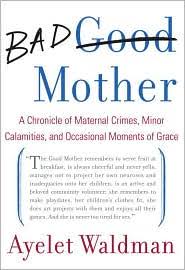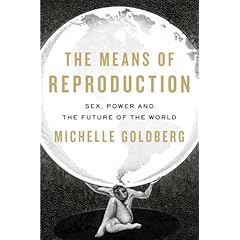



Somewhere within my past year’s reading the book Maiden USA: Girl Icons Come of Age by Kathleen Sweeney came into my orbit. It seemed ideal as I traced the history of girls onscreen, on television, and within other forms of media. Yet I wish I could give Sweeney’s book a more enthusiastic thumbs up. Listed as a “media artist and writer” Sweeney has taught at various colleges and been active in media training programs for girls. Her book began as a “curatorial project of films and videos by teenage girls entitled ‘Reel Girls/Real Girls'” which premiered in San Francisco.
Sweeney casts a wide net and she ranges from exploration of the Riot Grrrl movement to a chapter called “Mean Girls in Ophelia Land” which tracks the rise and fall of the “mean girl” movement within popular writing as well as on screen. She correctly identifies that for the most part the Teenage Girl, (as she capitalizes it) was a “passive helping noun linked to Daddies, Brothers, and Boyfriends,” until certain cultural zeitgeists began to shift. As cultural interest in girls gathered momentum, the growth of what Sweeney names a Girl Icon has grown. Sweeney is right on point when she chases this emergence through the past almost 20 years.
The book moves at a fast clip – her quick categorizations of Neo-Lolitas, Career Girls, Geek Girls, Cyber Chicks, as well as Supernatural Girls, Amazons, and Brainiacs, among other labels, often struck me as too glib. Her most intriguing point is what now defines an Icon in contemporary culture, as well as her reinsciption of the term into the word “Eye-con.” Sweeney calls an “Eye-con” an “image scam that must be navigated and brought to awareness by analyzing and naming its syntax,” not unlike a stereotype. Eye-cons do their most damaging work, she says, when viewers are unconscious of their influence. Within the pantheon of the “Eye-con” is the “Girl-con” she says, which are “Icons of girlhood which posit girls as inevitable Victims.” Examples are “anorexic adolescent models selling a form of starvation beauty.” Media literacy demands that viewers name the Girl-con and then look beyond to alternative role models as Sweeney says she wants to consider Girl Power Icons for the new millennium against a “backdrop of current and retro Girl Iconography.” Her writing about visual representation and even semiotics is at its strongest when she is doing this kind of analysis.
Yet, while impressive in scope, the book’s very breadth also serves as its limitation as depth is sacrificed for a sweeping survey of the cultural landscape. Sweeney’s enthusiasm for her subject is most strongly felt when she describes her first-hand work with girls. Her final chapter “Girls Make Movies: Out of the Mirror and Through the Lens” was the most intriguing to me. Sweeney’s passion as an activist comes out as she describes some of the current programs working with girls to advocate media literacy and develop their skills. She mentions Reel Grrls in Seattle, Wash., and GirlsFilmSchool in Santa Fe, N.M., among others. The book’s list of resources is also wonderfully thorough. I suspect undergraduate students would enjoy having this book assigned for its abundance of popular culture references, generous use of chapter subheads and discrete categorizations.
By contrast, another book I came across during my research was Mary Celeste Kearney’s Girls Make Media which became indispensible to me for both its range and its depth. Kearney is an academic, now tenured at UT-Austin and the book’s research is admirable. Neatly divided into three sections “Contexts,” “Sites,” and “Texts” Kearney also traces girls’ historical participation with media. She delves into girls’ entry into the web, also the impact of the Riot Grrrls, zine culture as well as independent filmmaking. Her focus on what happens when girls take over media production is what makes this book compelling. At the same time, she contextualizes the institutionalized practices that have keep girls from participating fully.
Particularly exposing is the deeply entrenched sexism in the field of filmmaking (the idea that cameras are too heavy for female techs to lug and “peer networks” or “structures of acquaintanceship” that boys use covertly, but effectively, advance their ambitions and deny girls access). Kearney’s cataloging is vast and its impact is felt as she reveals just how much girls who make media have to say. She includes writing about the need for single-sex media education but steps beyond it to show what girls really do when they’re given access to media tools. Their work often centers around exploration of identity and re-inscription of messages about gender roles that crack open a universe of deeply felt and powerfully smart dialogues about what most girls experience but hadn’t yet had a place to express.
Some of the titles Kearney includes tell a whole story: films such as Taizet Hernandez’s “Are You a Boy or a Girl?” which explores “real-life gender-bending of a young female” or Hernandez’s film “We Love Our Lesbian Daughters,” which explores coming out experiences and Kearney says offers “A rare glimpse into the lives of queer young Latinas” but focuses on sexual identity over ethnic identity. She groups films about sexual abuse such as “Love Shouldn’t Hurt” by Tamara Garcia or “It’s Never OK” by Arielle Davis, and includes a cache of films about the ubiquitous doll such as in Lillian Ripley’s “What if Barbie Had a Voice?” Just a fraction of other titles include: “Looks Like a Girl” which “broadens young lesbian representations beyond white, Anglo culture,” and “Body Image” by Mieko Krell, meant to “raise awareness about girls’ different relations to and strategies for negotiating dominant beauty standards.”
When exploring girls’ zines Kearney includes telling excerpts as this one from “Bikini Kill: A Color and Activity Book” about why female youth should enact social change: “To discuss in both literal and artistic ways those issues that’re really important to girls: naming these issues, specifically, validates their importance and other girls’ interest in them; reminds girls that they aren’t alone. To make fun of and thus disrupt the powers that be.” Even a smattering of the zine titles reads like a found poem: The Bad Girl Club, Bi-Girl World, Lezzie Smut, The Adventures of Baby Dyke, Geek the Girl, Angry Young Woman, Pretty in Punk, Housewife Turned Assassin, Angst Girl, Pixxiebitch, Ladies Homewrecking Journal, From the Pen of a Liberated Woman. The book’s website is also a wonderful resource as the power of the girls’ voices can be felt shouting through the distance.


 This here post comes straight from dear friend of GWP and mine, and fellow writer,
This here post comes straight from dear friend of GWP and mine, and fellow writer,  A new book has caught my eye, covering some of my favorite themes:
A new book has caught my eye, covering some of my favorite themes: 

 According to a recent report from National Center for Health Statistics, nearly 40 percent of all babies born in the United States in 2007, up from 34 percent in 2002 and 18 percent in 1980, were born to “unmarried” (their word) women. And the other week (May 26), Cathy Young asked in a Boston Globe article (“
According to a recent report from National Center for Health Statistics, nearly 40 percent of all babies born in the United States in 2007, up from 34 percent in 2002 and 18 percent in 1980, were born to “unmarried” (their word) women. And the other week (May 26), Cathy Young asked in a Boston Globe article (“
 Seriously. I kid thee not. In the May 18th issue currently on the stands, two members of my writers group have features!
Seriously. I kid thee not. In the May 18th issue currently on the stands, two members of my writers group have features! We’re pleased to bring you another cross-post from our friends at Feminist Review. In this week’s edition, Sarah Eve Nichols-Fulghum reviews Michelle Goldberg’s The Means of Reproduction. –Kristen
We’re pleased to bring you another cross-post from our friends at Feminist Review. In this week’s edition, Sarah Eve Nichols-Fulghum reviews Michelle Goldberg’s The Means of Reproduction. –Kristen Courtesy of
Courtesy of  In a happy arrangement with our friends over at the blog and editorial collective
In a happy arrangement with our friends over at the blog and editorial collective 